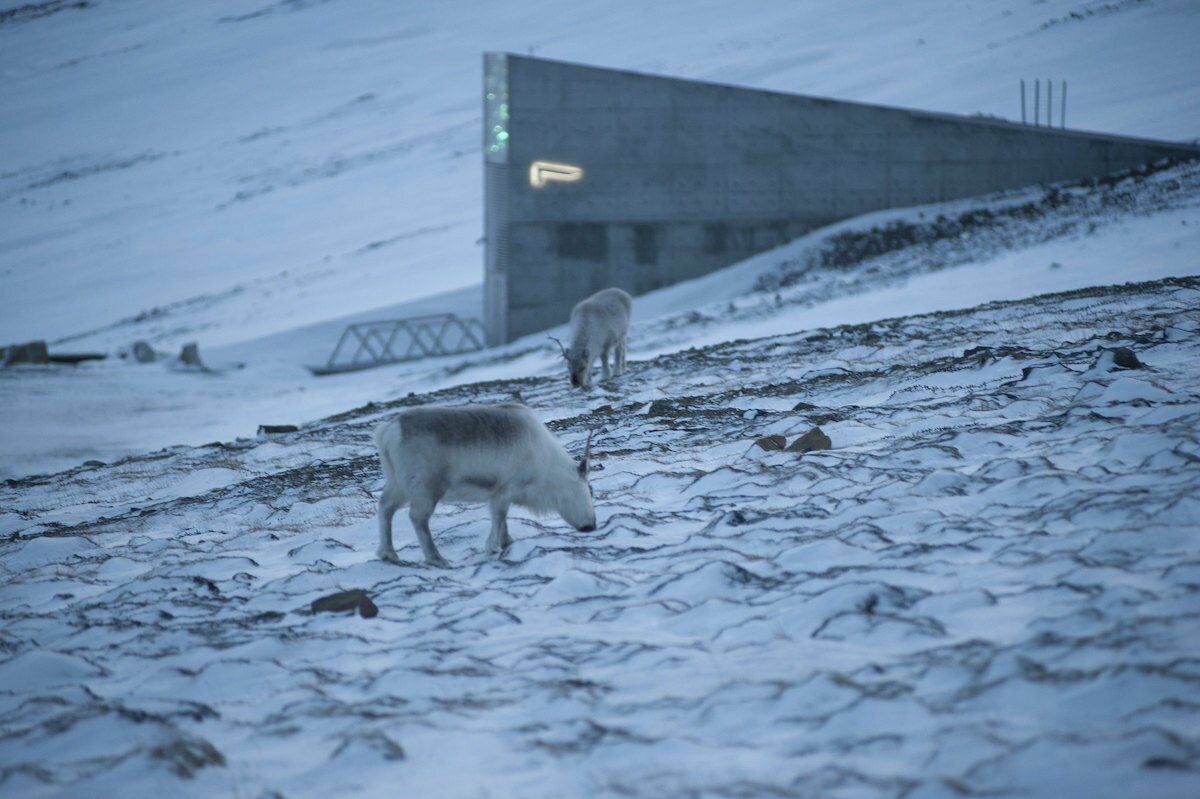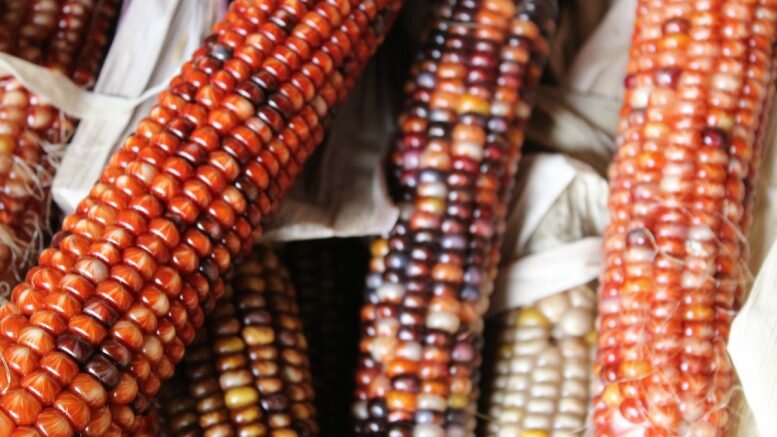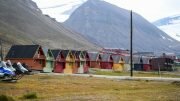The Cherokee people became the first indigenous Americans to store their heirloom plant species in the Svalbard Seed Vault.
The Svalbard Global Seed Vault
The Svalbard Seed Vault is located 1300 kilometers above the Arctic Circle on Spitsbergen, the only populated island of the remote Svalbard archipelago.
The Seed Vault, opened by the Norwegian Government in February of 2008, is the largest and most diverse seed security facility in the world. It’s home to around 1 million seed samples and plant specimens from almost every country on Earth.
Photo: Landbruks- og matdepartementet / Flickr (CC BY-ND 2.0)
What’s the goal of the Seed Vault?
Other than being a site of scientific research, the Seed Vault is just that; a secure facility which aims to ensure the survival of plant species, especially in the case of a large-scale natural or man-made disaster.
Historic Cherokee crops
Senior Director of Cherokee Nation Environmental Resources Pat Gwin was interviewed by the National Public Radio in 2019. Shortly after that, he was contacted by the Director of Science for the Global Crop Diversity Trust, Luigi Guarino.
“This is a tremendous opportunity and honor for the tribe. Additionally, knowing the Cherokee Nation’s seeds will be forever protected and available to us, and us only, is a quite valuable thing indeed”, Gwin stated in a Cherokee Nation press release.
“The Cherokee Nation Seed Bank has always hoped to be able to deposit our traditional food crops into Svalbard one day”, added Cherokee Nation Cultural Biologist Feather Smith.
Cherokee Nation decided to contribute nine samples of Cherokee heirloom crops, including the peoples’ most sacred corn: Cherokee White Eagle Corn. Along with three other types of corn, varieties sent include Cherokee Candy Roaster Squash, Cherokee Long Greasy Beans, Cherokee Trail of Tears Beans, and Cherokee Turkey Gizzard black and brown beans.
All nine seed varieties have been grown by the Cherokee peoples prior to European settlement in the Americas.
“Agricultural maintenance and crop cultivation were essential parts of our lives well before Europeans set foot on this continent.
“Corn, beans, and squash have been planted together – the traditional “three sisters” – for as long as anyone can recall”, Principal Chief of Cherokee Nation Chuck Hoskin Jr. stated in another press release.
Chief Hoskin continued, “Our ancient crops were drought and insect resistant. They had a long storage life, which sustained us through many winters.”
“History in the making”
“This is history in the making, and none of it could have been possible without the hard work of our staff and the partnership with the team in Norway”, stated Chief Hoskin, continuing, “It is such an honor to have a piece of our culture preserved forever. Generations from now, these seeds will still hold our history and there will always be a part of the Cherokee Nation in the world.
“These varieties are genetically unique to the Cherokee Nation. They are the same crops our people have been farming for hundreds of years. They are important both culturally and scientifically.
“The preservation of these seeds has always been a priority for our people. Losing a plant variety is irreversible in the same way as the extinction of a bird, reptile, or mammal.
“If the worst should happen, there is peace of mind in knowing these precious seeds are protected in the Svalbard vault.”
The official addition of Cherokee seeds
In February of 2020, the nine heirloom species of the indigenous peoples were shipped off to Svalbard.
Svalbard hosted a large seed deposition on February 25, 2020, adding a large number of seeds to its collection, including Cherokee Nation’s.
The Cherokee seeds were carefully vacuum-sealed and packaged before being shipped to the Arctic island.
They will be stored in the Seed Vault indefinitely.

Source: Norway Today





Leave a comment